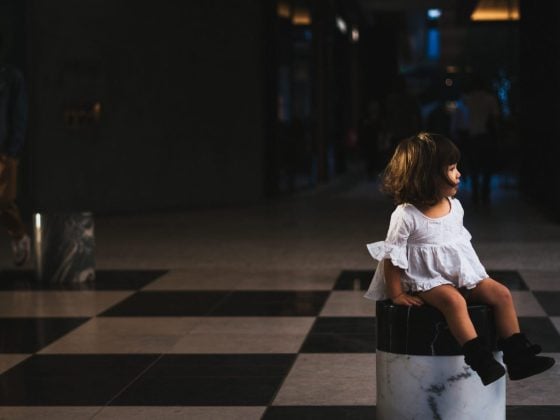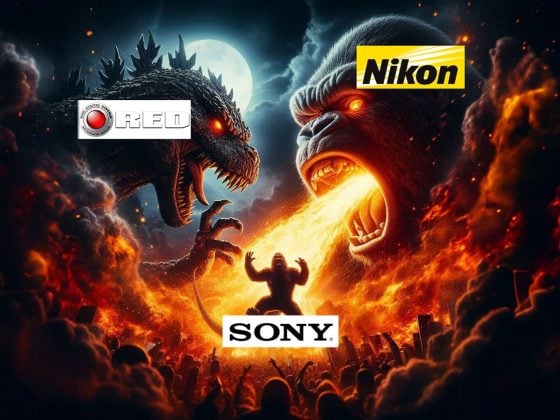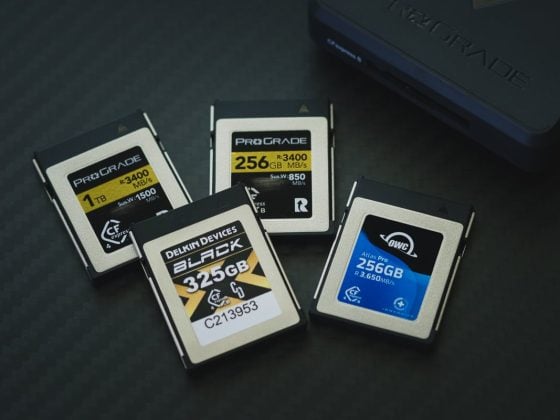The Fujifilm 16mm f1.4 can easily be considered one of Fujifilm’s best lenses. It’s fast and sharp, with incredible corner-to-corner detail. It also has fast autofocus and amazing macro-focusing capabilities.
While a few other Fujifilm lenses share a similar focal length, like the 14mm or the 18mm, nothing beats the 16mm in terms of all-around performance.
Fujinon 16mm f1.4 Lens Stats
Focal Length: 16mm equivalent to 24mm
Aperture Blade: 9 circular aperture blades
Elements: 13 elements in 11 groups – Two Aspherical and Two ED Elements
Front Filter Threads: ø67
Coatings: Nano-GI internal coatings, HT-EBC external coatings.
Focus: Auto
Fast Contrast AF Microcomputer: It should. There’s no way of knowing for sure.
Pros: Good DoF and bokeh wide open – good contrast – good color – amazing corner-to-corner sharpness – good flaring control – shallow depth of field – great macro focus – fast autofocus – good build quality – weather-sealed
Cons: Big and heavy for the smaller cameras – not the prettiest bokeh when stopped down – onion ring bokeh – bad longitudinal chromatic aberrations at f1.4
Fujinon 16mm f1.4 – Amazon / Adorama / BHphoto


Fujifilm 16mm f1.4 | First Impressions
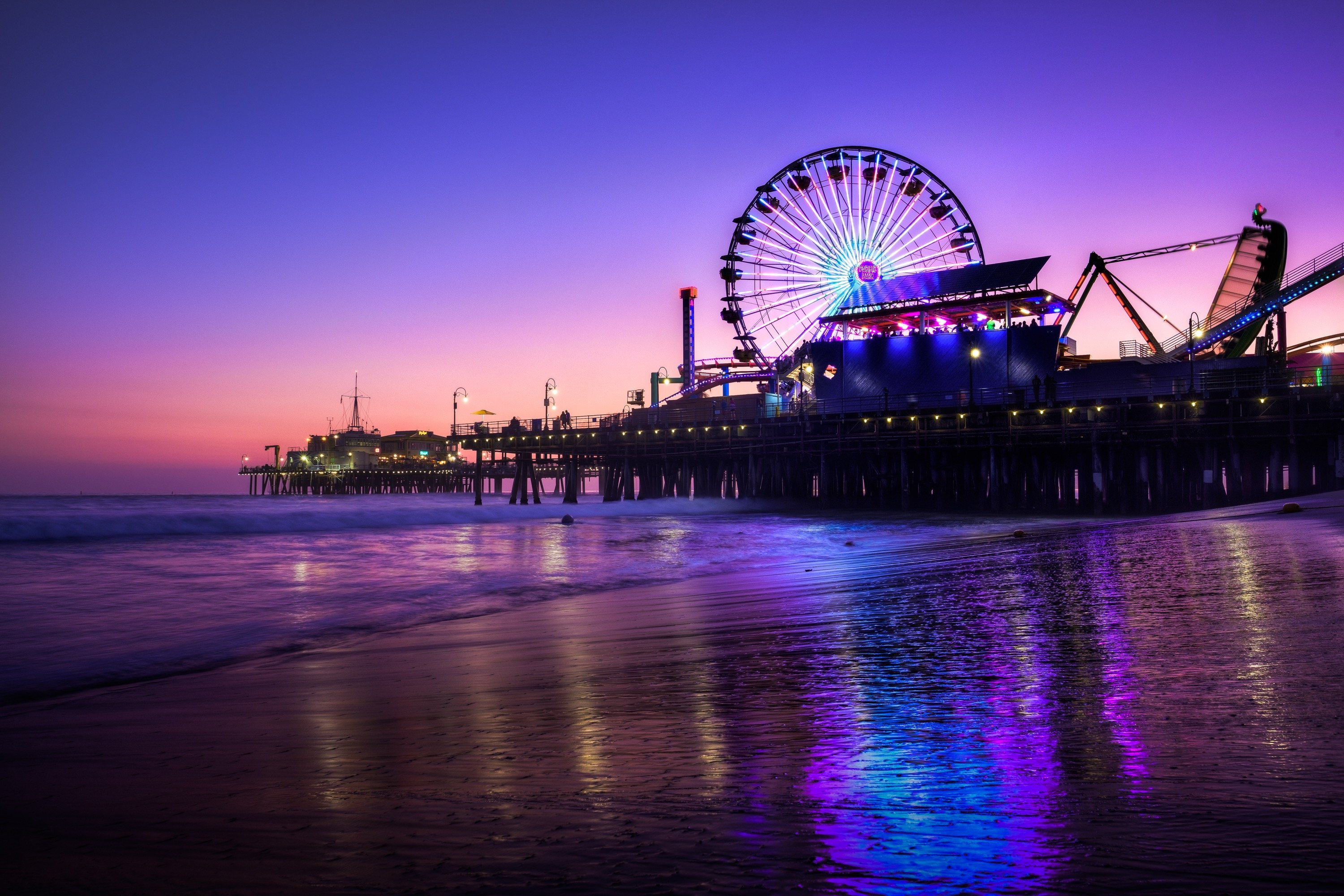
Overall, the Fujifilm 16mm f1.4 is a phenomenal lens with very few negative characteristics other than maybe its size and weight. I consider it one of the best Fujifilm lenses in terms of overall design and tuning of characteristics.
Because of the f1.4 aperture, this lens is fun to use in low light or indoors. While I use wide lenses mostly for landscape photography, I find myself reaching for this lens more and more for general use, especially when traveling. I find it essential for event photography or, as I sometimes do, ‘behind-the-scenes’ photography.
I do not love the manual focus lock or clutch built into the focus ring. Most Fujifilm cameras have focus control switches on the camera, which can create confusion and redundancy. I don’t like this because I often switch between manual and autofocus when shooting landscapes, and I think I have autofocus on, but the lens will still be in the manual, so it won’t focus. This will throw me off if I haven’t used this lens in a while.

Fujinon 16mm f1.4 Build Quality
Fujifilm always builds great lenses, and the 16mm is no exception. The Fujinon 16mm has a minimum aperture of f1.2 and a maximum aperture of f16, and the minimum focus distance is just 6 inches.
The lens is made of full metal, is weather-sealed, and has 13 elements, which is higher than average for Fujinon prime lenses (except for the 80mm macro lens, which has 16 elements). However, this lens still has some nice contrast and micro contrast.
Two aspherical elements do an amazing job of controlling corner sharpness. The lens also has some onion-ring bokeh with some purple fringing along the bokeh edge and a subtle cat’s eye shape along the edges of the frame.
The aperture ring is a fly-by-wire with 1/3 stop clicks, and the focus ring is a fly-by-wire. Some Fujifilm lenses, like the 56mm f1.2, have an issue with these rings being too loose or having almost no resistance. However, the 16mm has some nice resistance, and I’m not finding myself accidentally changing the aperture too often. The same is true for the focus ring.
I personally have been plagued by lens elements coming out of alignment with Fujifilm’s wide lenses, so I’m somewhat paranoid that this could happen with this lens. Their wide lenses, especially the 10-24mm and the 23mm f1.4, seem very fragile, and this lens should probably be babied like the others.
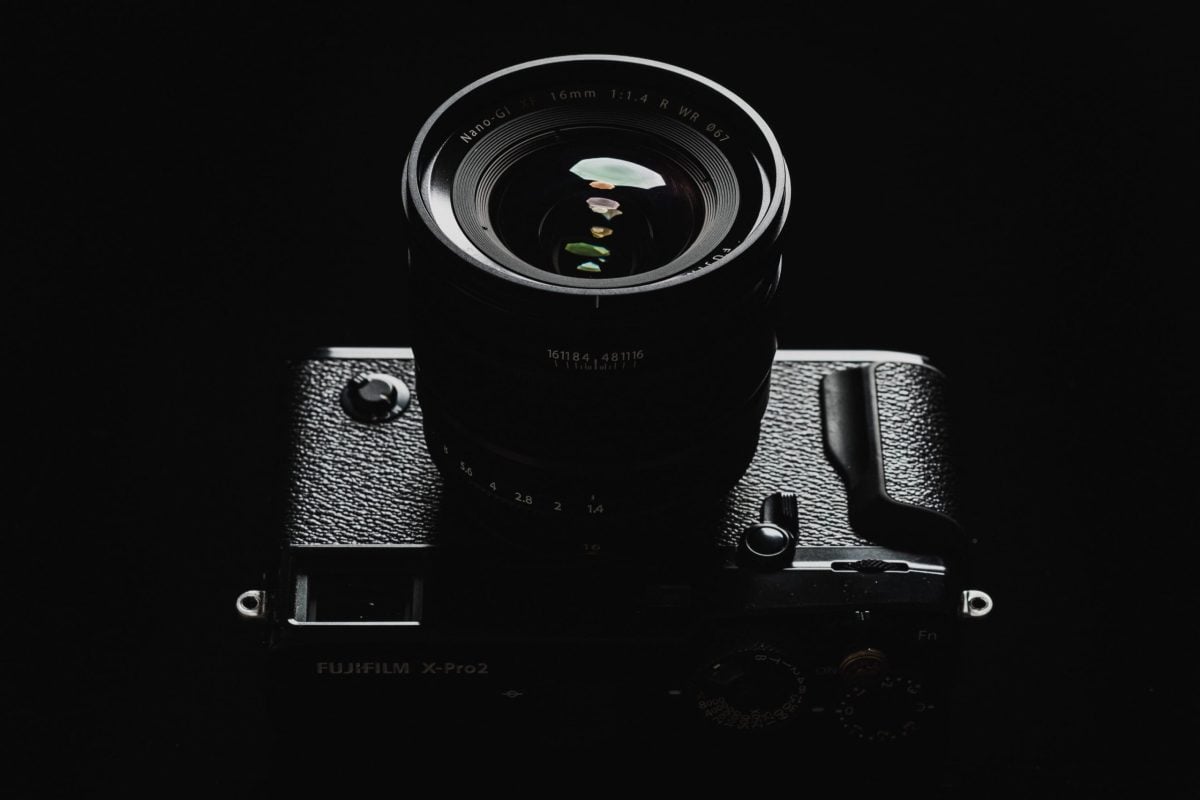
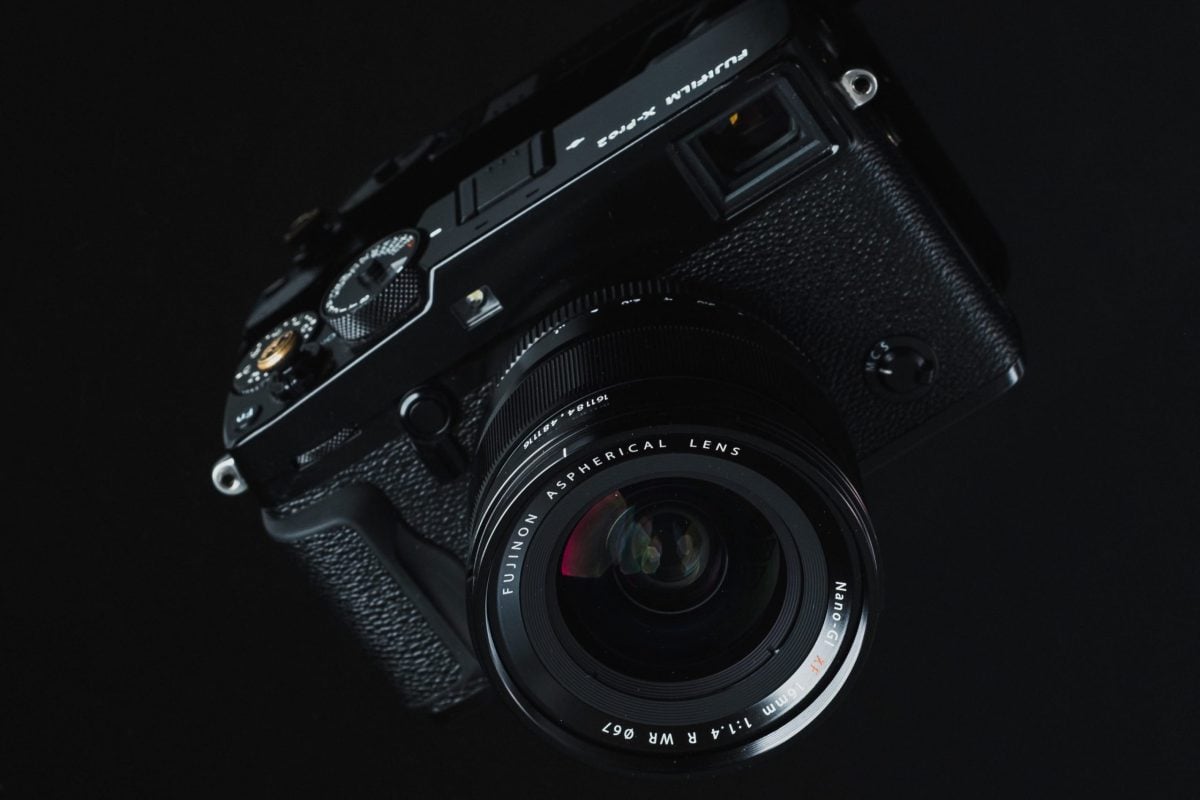
Sharpness Samples
The corner-to-corner sharpness of this lens is amazing. Very few lenses, especially ultra-wide lenses, perform this well.
When wide open, there is only a very subtle drop off of sharpness towards the edges and corners. The corners actually improve at around f4 to f5.6 to the point where they are sharper than the edges.
Sharpness at f1.4, at least with my copy, is decent, but it improves dramatically by f2.
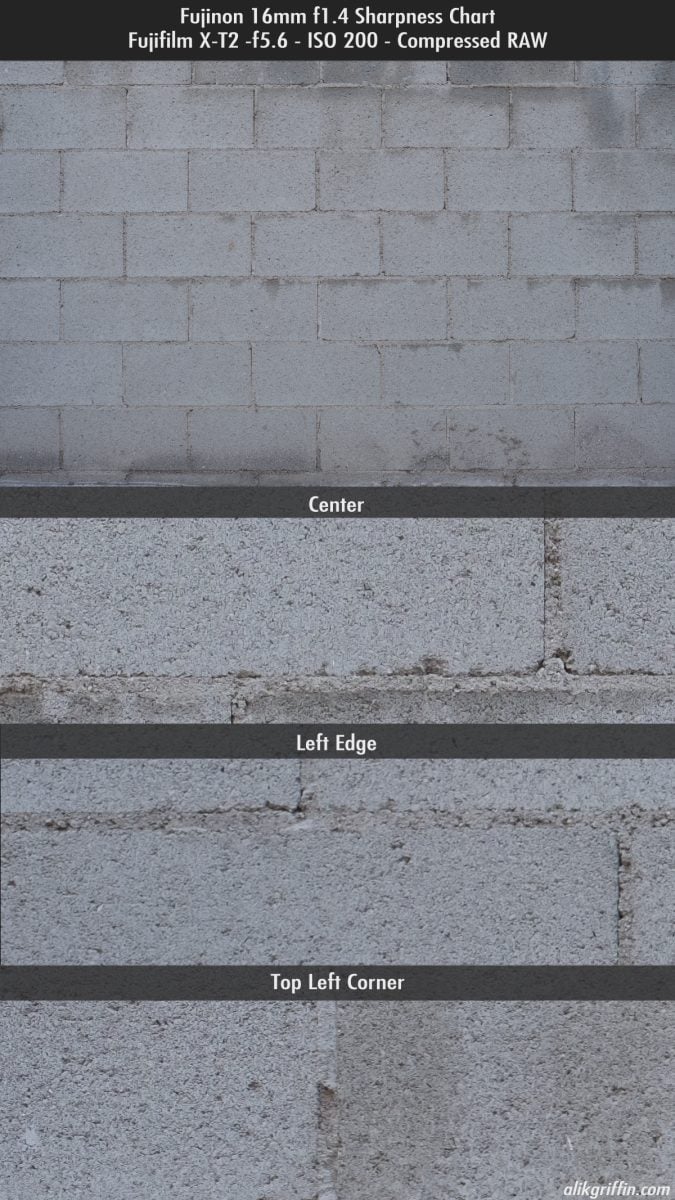

Sharpness chart using concrete wall
The above test I was 3-4 feet from the wall.

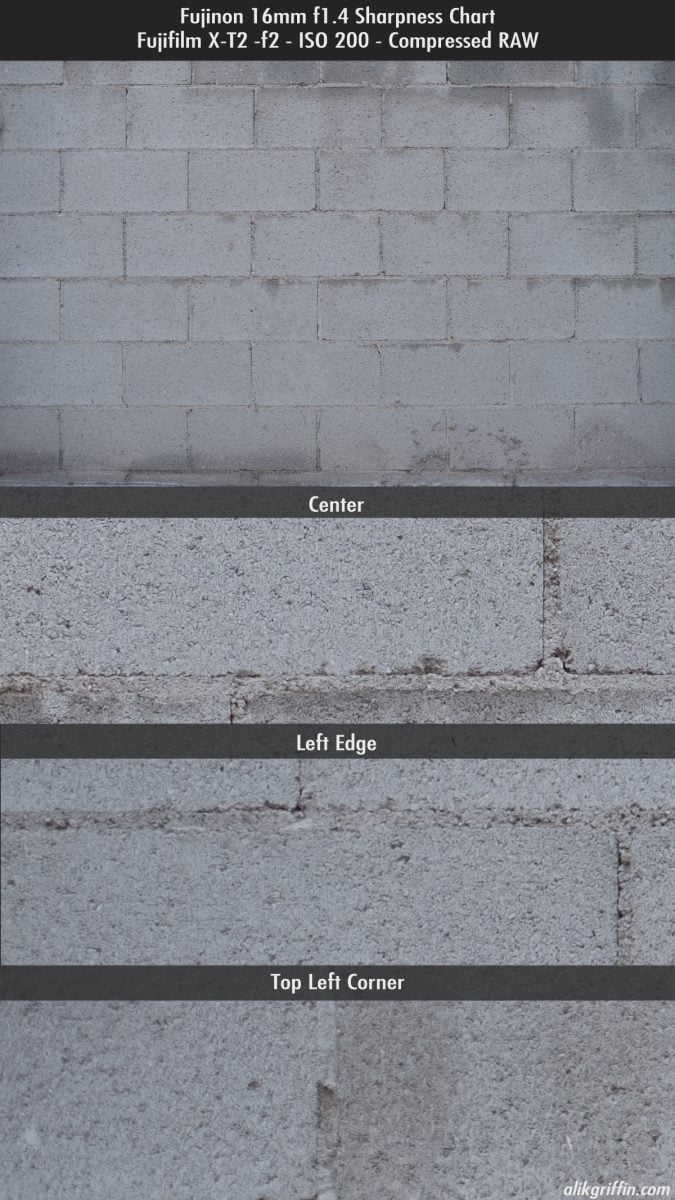






Sharpness chart using a fence
For some color, this test was about 5-6 feet from the fence.








Fujinon 16mm f1.4 Diffraction & The Sweet Spot
It would seem the sweet spot is between f2.8 and f5.6. Diffraction comes in early with this lens; you’ll notice it’s slightly softer at f5.6 than f4 but still very usable at f8.


Distortion & Vignetting
There is almost no vignetting except a very subtle amount at f1.2 and f2, which is mostly corrected by Fujifilm’s baked-in lens profile corrections. There is also only a touch of barrel distortion.
Even when you bring shots into Iridient Developer and remove Fujifilm’s lens profiles, there is still very little distortion but some extra vignetting.

Chromatic Aberrations
There are some issues with chromatic aberrations when wide open at f1.4, mostly purple and blue fringing. It’s nothing too serious unless you are shooting high-contrast situations. Stop down to f4 or f5.6, and it’s no longer an issue.


Contrast / Micro Contrast / Rendering
This lens has decent contrast. If you don’t mind a lot more vignetting, a better high-contrast lens around this same focal length would be the Voigtlander 15mm f4.5. However, this lens is superior to that lens overall.
The 16mm contrast and micro contrast are just average for a Fujifilm prime but better than the Fujinon 10-24mm, and it seems to be a touch better than the Fujinon 14mm.
Overall, the rendering and color are nice, which makes this lens so impressive.
I don’t usually include this in my lens reviews, but I’ve decided to include some straight-out-of-camera raw photos from the Fujifilm 16mm lens so you can see how incredible the colors and rendering are before any post-processing.
Fujinon 16mm Straight Out Of Camera Raw Samples
The contrast is good, but the overall rendering and color are nice. The lens is pretty mind-blowing for a 16mm.
Seriously, look at these untouched RAW shots.
There was no processing with the Adobe Profile in Lightroom.
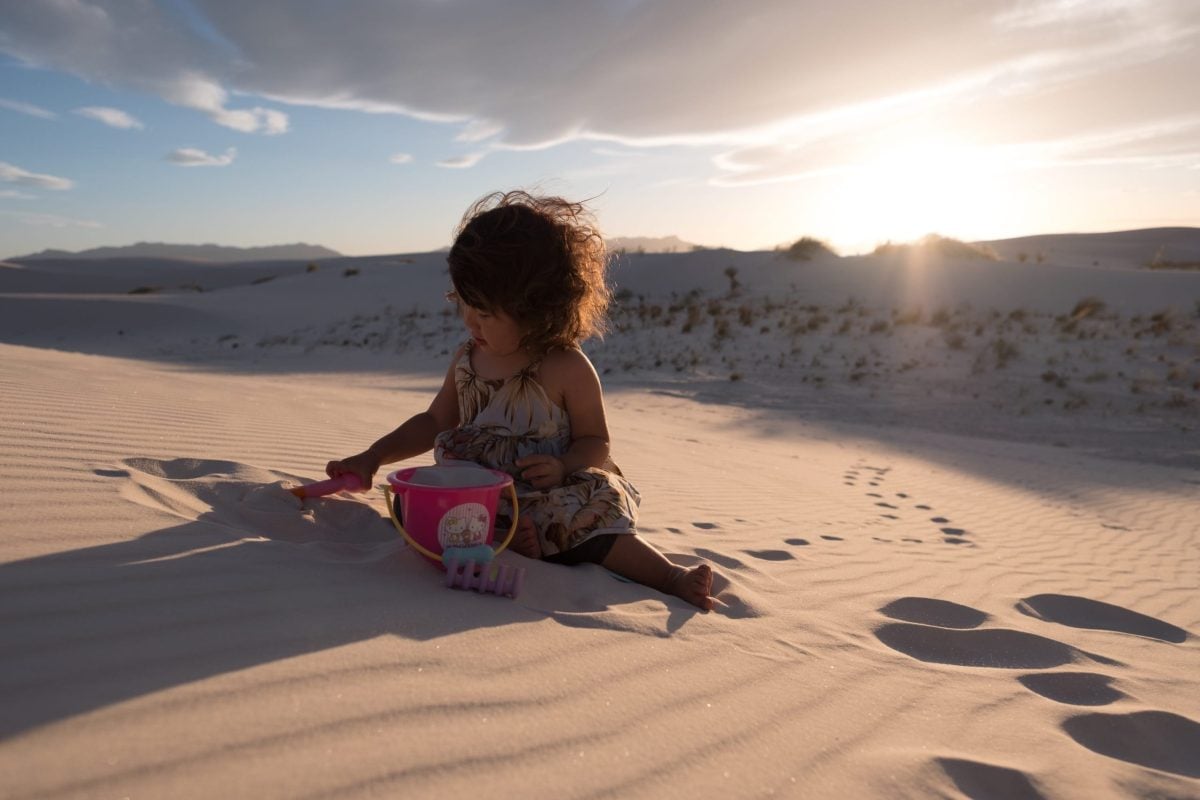








Fujinon 16mm Bokeh Samples
Bokeh has a nice shape when wide open at f1.4, with a slight cat’s eye effect towards the edges and a somewhat unattractive onion ring pattern. Overall, the bokeh could be smoother, but for a lens this wide, I’m not sure if that will even be physically possible.
Stopping down to f5.6 gives a slightly harsher look with some geometric patterns, and the background will tend to get a little messy and distracting.
If there is one thing I don’t love about this lens, it’s that busy bokeh. But, to be real, it’s not even remotely busy compared to a busy bokeh lens. I’m just being somewhat critical because this lens is so close to perfect that there isn’t much to talk about or even to criticize. So compared to something like the 56mm f1.2, yeah it’s not buttery smooth, but this lens is a 16mm.





Real World Bokeh Samples


Fujifilm 16mm f1.4 Review | Bottom Line
The Fujinon 16mm f1.4 is an all-around great lens. It’s kind of a unicorn for a 16mm, and it’s probably the best ultra-wide prime ever made.
It’s wide enough to be a fun landscape, night, and travel photography lens, but not too wide so it’s no longer useful for casual daily use. It will feel a little big and heavy on smaller Fujifilm cameras like the X-E3, but it feels ok on the X-T2 or even the X-Pro2.
I do find it difficult to use with street photography, where I often want to get closer, more intimate shots without capturing too much of the surrounding scene. This lens is fairly wide, so isolating the subject requires more attention to framing and composition.
This lens is excellent in terms of overall sharpness, contrast, and color. There is some aspherical cat’s eye bokeh with some onion rings to go along with it. The bokeh at f1.4 is a little bit busy and can sometimes be distracting, but I wouldn’t consider it bad by a stretch of the imagination.
Should you get this lens?
I would say get this lens if you need a 16mm lens or even kind of want one. For a wedding photographer, event photographer or even an astrophotographer, this is simply a must have. It’s also leaps and bounds better than the 16mm end of my 10-24 mm lens.
Personally, I don’t really like shooting this wide unless I’m shooting landscapes. While the Fujinon 14mm f2.8 is inferior with a lot of what it offers, once stopped down, it’s a little harder to tell the difference between the two (except for in the corners), so I end up leaning towards the 14mm lens simply because of its size and weight. The 14mm is much more compact than the 16mm but it a touch softer.
However, if I ever shoot behind the scenes or any type of event photography, I always bring the 16mm. So, gun to the head if I had to pick one, the 14mm or the 16mm, I would go with the 16mm just because it’s more us
Fujifilm 16mm f1.4 Sample Photos














| **This website contains affiliate links. We will earn a small commission on purchases made through these links. Some of the links used in these articles will direct you to Amazon. As an Amazon Associate, I earn from qualifying purchases. |

